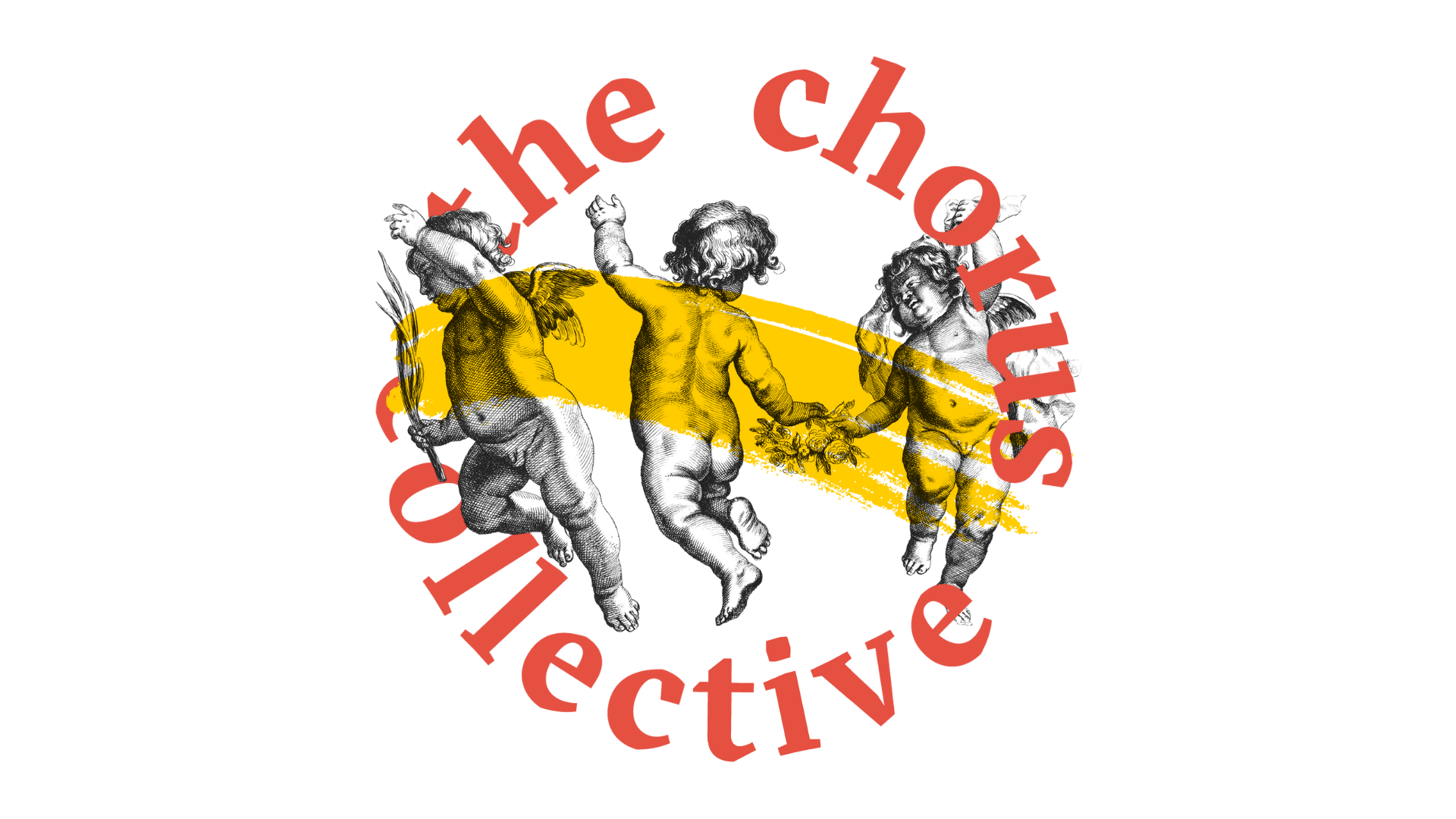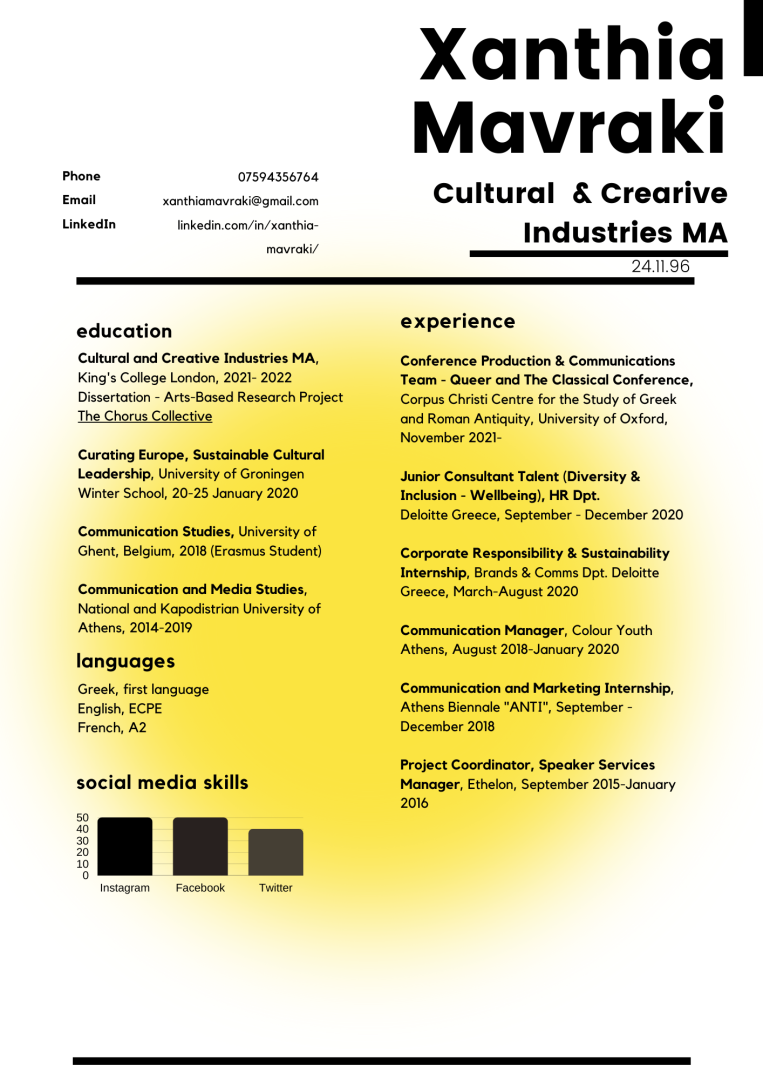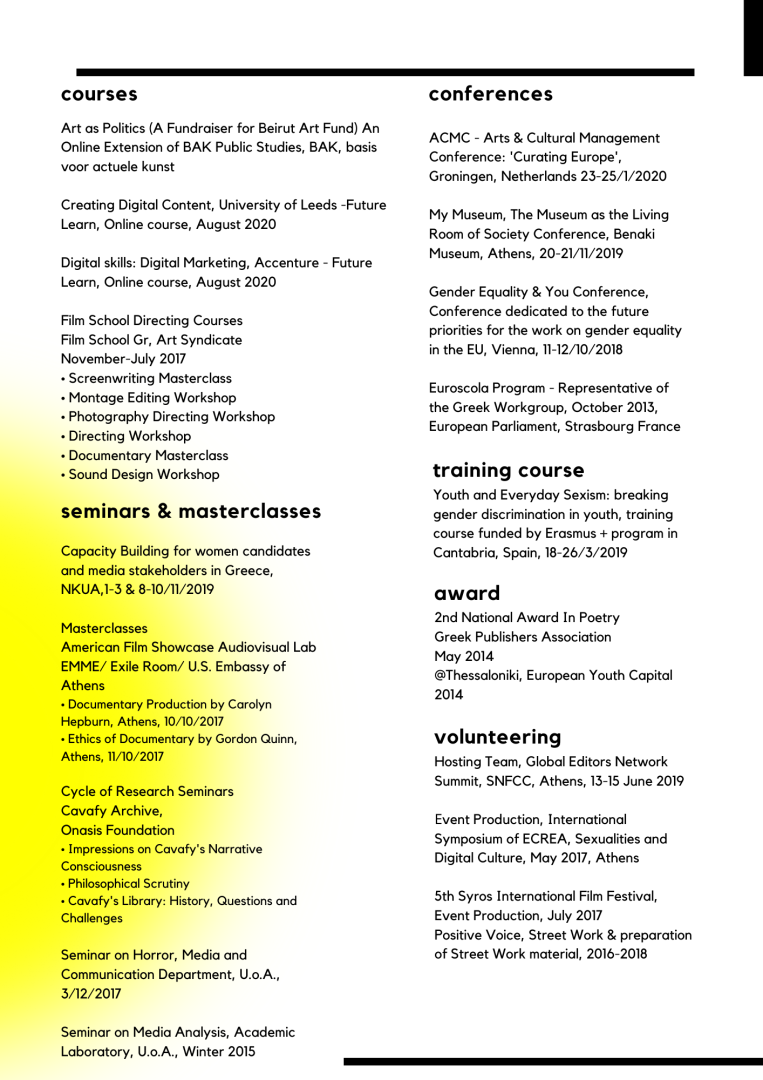The Chorus Collective
Basic information
Project Title
Full project title
Category
Project Description
Can you imagine a contemporary version of the art world that does not uphold racial, gender, social, financial or sexual biases?
The Chorus Collective is here to give a platform to local artists from all (or no) educational backgrounds to take part in a visual arts exhibition.
The artists who will submit will be the curators of the exhibition. They will be the ones who will decide what is 'good art' the power gets back to the collectives. Can your art join the Chorus?
Geographical Scope
Project Region
Urban or rural issues
Physical or other transformations
EU Programme or fund
Which funds
Description of the project
Summary
The Chorus Collective is a novel visual arts exhibition model that creates space for underrepresented communities in arts. I have already run a pilot of this model as part of my Arts-Based Dissertation for my Masters in Cultural & Creative Industries for King’s College London. More information, the exhibition, manifesto and demographics of the people who have submitted their work can be found on the website I creates here: www.thechoruscollective.com.
The art world has never been an equal world, especially when it comes to gender equality. For the west, the successful visual artists have been, white, privileged, western and most importantly male (Nochlin, 1978). Almost 68% of the overall exhibiting artists in Athens’ most successful commercial galleries for the years 2019-2021 are male. This analogy does not correspond with the percentage of male and female art students, since the majority of people who study art in Greece are women.
The Chorus Collective model provides a new alternative to tackle this inequality that can be found not only in the art world but also in the majority of the different societal fields.
The process is simple.
- People from all or no educational backgrounds will submit their art on a specifically designed website, while also answering a questionnaire about their demographic data.
- The submitting artists will then be given a link where all the submitted artworks could be found without any information on the background of the artist or the artwork. Art has to speak for itself. The artists will then have a chance to vote for their favourite artworks with no information on the background of the creators.
- At the end of this process, an exhibition will be created. The most voted works will stand in the limelight representing a polyphony of local art production that will stand against biases, will create a sense of community and an unbiased discourse of visual art production will be realised.
Key objectives for sustainability
The Chorus Collective model falls under the category of 'Regaining a sense of belonging' so its main key objectives are not focused on environmental sustainability.
However, I plan to choose the place that will host the exhibition to a historical building in/ or at the outskirts of Athens. There are many historical (industrial and other) buildings in Attica that hold immense historical and cultural history. Adaptive reuse of existing buildings has been proved to have crucial environmental benefits (Assefa and Ambler, 2017; Thornton, 2011). Specifically, there have been recorded ‘significant reductions in energy consumption and related carbon dioxide and other greenhouse gas emissions, fossil fuel consumption, freshwater consumption’ (Foster, 2020, p.3). So even though the project will not address environmental sustainability per se, the curation around its realisation will be wholly focused on environmental responsibility and sustainability.
Sustainability for me is holistic and multidimensional. Through opening the space for a more socially sustainable future in any sector, discussions commence of 360 sustainable living.
Key objectives for aesthetics and quality
Aesthetics and quality are important in the creation and success of any project, even if the project is not closely related to purely aesthetical ideas. For the Chorus Collective, aesthetics and quality are at the core of the project values and objectives.
The name of the project is inspired by the function of The Chorus (χορός) in ancient Greek dramaturgy as a collective character that comments on the play and on what happens in the imagined society during the play (Weiner, 1980).
'They might tell you that the Chorus is you, but the Chorus is people who feel. People who are drowning in pathos, people who respond emotionally to the dramaturgy of society. We bestow upon the people of the Chorus our troubled emotions and through their catharsis we are relieved. The Chorus is the interpassive subject. It commits to undertaking and tending to your emotions. Your catharsis is complete.
Don’t artists do the same? They feel for you, they create, they are exposed so you can feel through them, through their art, their work. You do not have to search for your own path to cleansing. They shoulder the weight of battling with your existence.'
I created imaginary inspired by Greek mythology and the masks worn by actors during Greek plays, to create a solid a cohesive brand identity for the Collective. You can have a look at the visuals on the website and the Instagram account of the project. I have already created a coherent and solid brand identity since I believe that especially for this project aesthetic quality is crucial for its success. My experience in graphic design and content creation will assist me to elevate the brand on a bigger scale.
Moreover, the project is backed by ideas on the importance of anonymity in art exhibitions by the ‘Societe Anonyme Inc.’ that has been established by the conceptual art visionnaire Marchel Duchamp amongst others and by more recent models of blind selection processes as the New Contemporaries annual exhibition in the U.K.
Key objectives for inclusion
The Chorus Collective is crafted upon ideas of accessibility/ inclusion/ equal opportunities and public participation - co-creation.
Equal opportunities through Anonymity:
In order to tackle the inequality in the art world and to be able to create a sense of belonging anonymity will play an important role.
- Anonymity offers the elimination of biases. You cannot vote for someone based on homophily (how close you think their identity is to yours) nor you are aware of their background. The artist you want to vote for could be a major contemporary artist exhibiting in Biennales or your neighbour that you had no idea could draw.
- Additionally, anyone who would like to apply will have the opportunity to do so with no fee, through the website designed specifically for the exhibition.
Sense of Community & Public Participation
- Moreover, a sense of community is being created since there will be no jury in place. The people vote for themselves. They are the ones who will have the power, underrepresented groups will have the power to determine who will stand in the limelight.
- This project is focused and underlines the importance of public participation, so much so that without the participation of the public cannot be realised.
The power goes to the people, all the people and particularly to those who do not see themselves represented in the visual arts sector.
After the end of my research, I was able to calculate and compare the gender of the people who participated in my pilot project for my dissertation. I was able to clearly underline that this model created a more inclusive space, specifically gender-wise since the majority of people who participated identified as women while only 23% identified as male. You can see more data here: https://www.thechoruscollective.com/demographics, while the average in contemporary galleries in Greece is the complete opposite (68% male artists represented).
Physical or other transformations
Innovative character
The Chorus Collective encapsulates the ideals of aesthetic and intellectual excellence while striving for inclusivity and equal representation.
Aesthetic
As previously described, aesthetic coherence stands at the heart of the project not only because the project is about visual arts but because coherent visual brand identity is important for every successful project. For the aesthetic part of the project, the use of mythological images will be used blended with modern/ conceptual art imagery as the 'Fountain" by Marchel Duchamp. Moreover, if the prize is awarded to the project and the place of the exhibition is decided I will include the specific characteristics of the place in the visual identity.
Environmental
By the adaptive reuse of an existing (industrial) building, I will attempt to also add to the identity of the project an environmentally conscious character, since reuse of existing buildings has been found to be environmentally sustainable.
Inclusivity
Inclusivity lies at the core of this project, as it clearly tries to open the space for underrepresented communities and empower them through democratising the process of exhibition-making. The participants will hold the power, they will be curators and creators. All biases are to be eliminated through anonymity.



